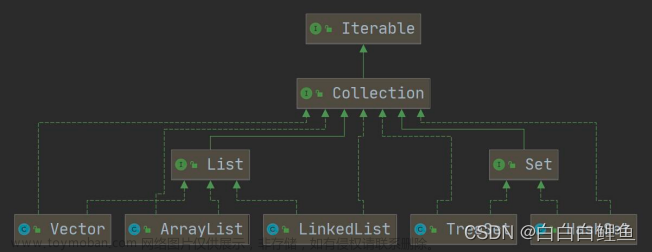//Itr是 ArrayList中的一个内部类
private class Itr implements Iterator<E> {
int cursor; // index of next element to return 光标,表示是迭代器里面的那个指针,默认指向0索引的位置
int lastRet = -1; // index of last element returned; -1 if no such 表示上一次操作的索引
int expectedModCount = modCount;
Itr() {}
public boolean hasNext() {
return cursor != size;
}
@SuppressWarnings("unchecked")
public E next() {
checkForComodification();
int i = cursor;
if (i >= size)
throw new NoSuchElementException();
Object[] elementData = ArrayList.this.elementData;
if (i >= elementData.length)
throw new ConcurrentModificationException();
cursor = i + 1;
return (E) elementData[lastRet = i];
}
public void remove() {
if (lastRet < 0)
throw new IllegalStateException();
checkForComodification();
try {
ArrayList.this.remove(lastRet);
cursor = lastRet;
lastRet = -1;
expectedModCount = modCount;
} catch (IndexOutOfBoundsException ex) {
throw new ConcurrentModificationException();
}
}
iterator的四个细节
-
NoSuchElementException异常
当上面循环结束之后,迭代器的指针已经指向了最后没有元素的位置
-
迭代器遍历完成,指针不会复位
如果我们要继续第二次遍历集合,只能再次获取一个新的迭代器对象
-
循环中只能用一次next方法
next方法的两件事情:获取元素,并移动指针文章来源:https://www.toymoban.com/news/detail-776340.html
-
迭代器遍历时,不能用集合的方法进行增加或者删除文章来源地址https://www.toymoban.com/news/detail-776340.html
到了这里,关于Iterator集合底层原理的文章就介绍完了。如果您还想了解更多内容,请在右上角搜索TOY模板网以前的文章或继续浏览下面的相关文章,希望大家以后多多支持TOY模板网!








